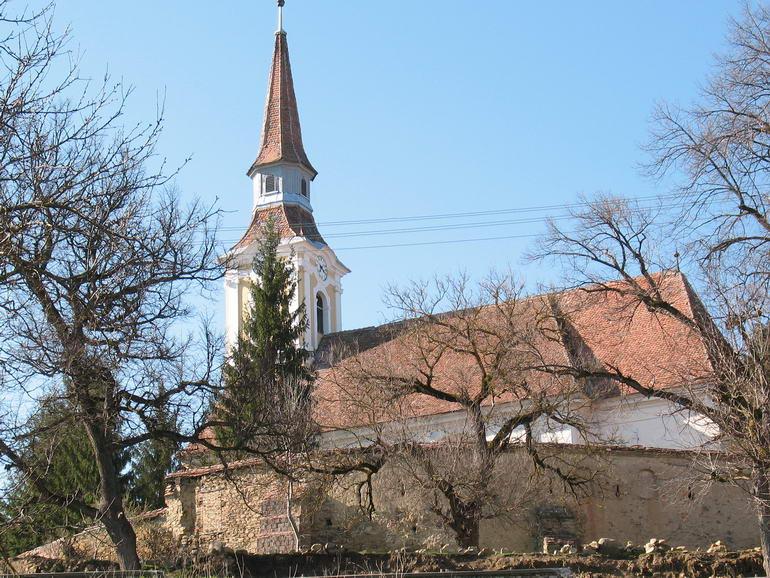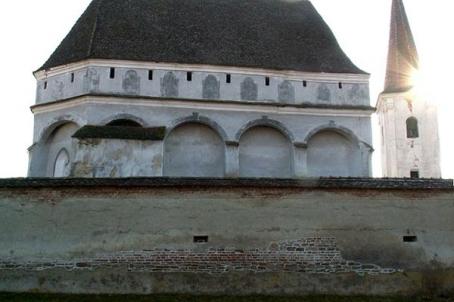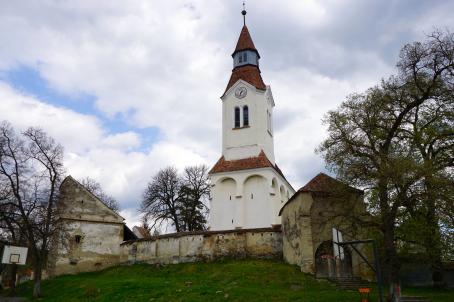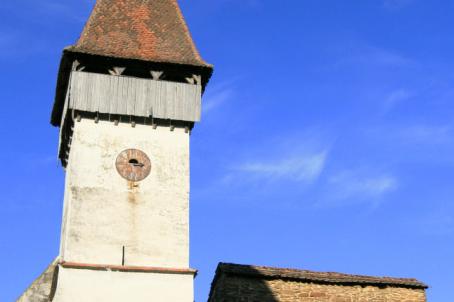Criţ Fortified Church
The neo-classical hall church with chancel and western bell tower was built between 1810 and 1813, after the collapse of the initial construction, first mentioned in documents from 1270. But there is no information concerning the aspect of this former church. It is, though, supposed to have been represented in a drawing on one of the church’s pews, dated 1793. The interior hosts the altar with organ gallery, the pulpit and the font, which were made partially at the same time with the construction itself, but also in 1822.
Only the ring wall and four defensive towers are still preserved from the 15th century fortification system, while the fifth tower collapsed in 1925 and was never rebuilt. On the southern side, next to the former kennel, only the ruins of the old Saxon school still exist today.
About this building
For more information visit on this building visit https://kirchenburgen.org/en/location/deutsch-kreuz-crit/






